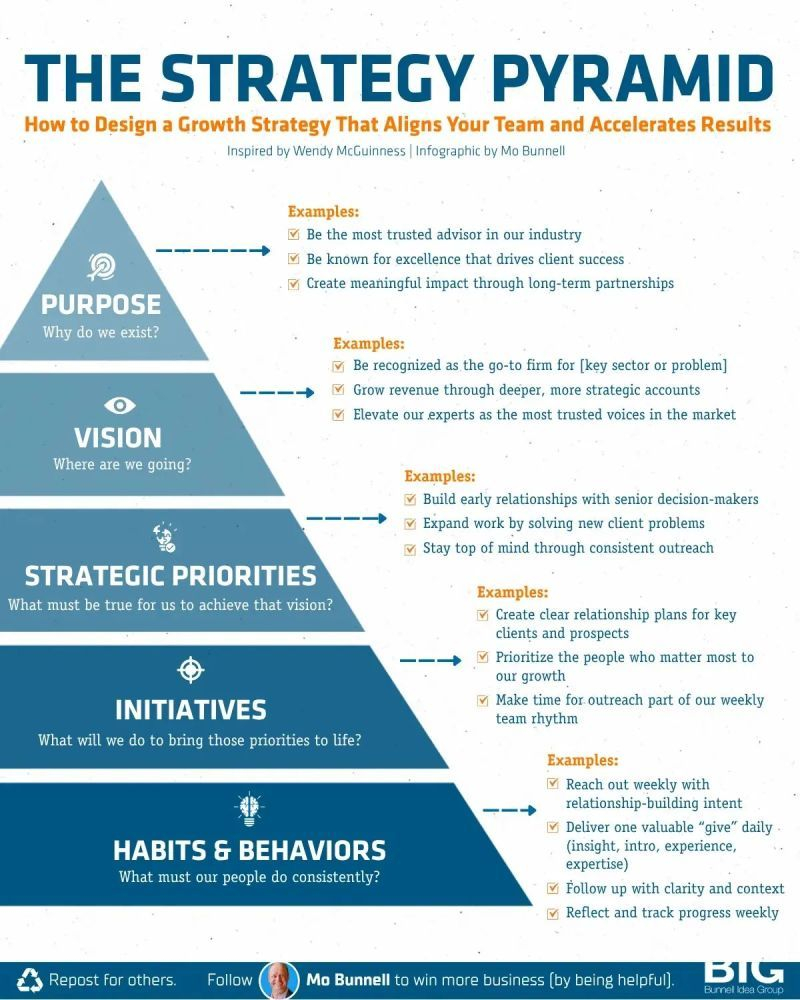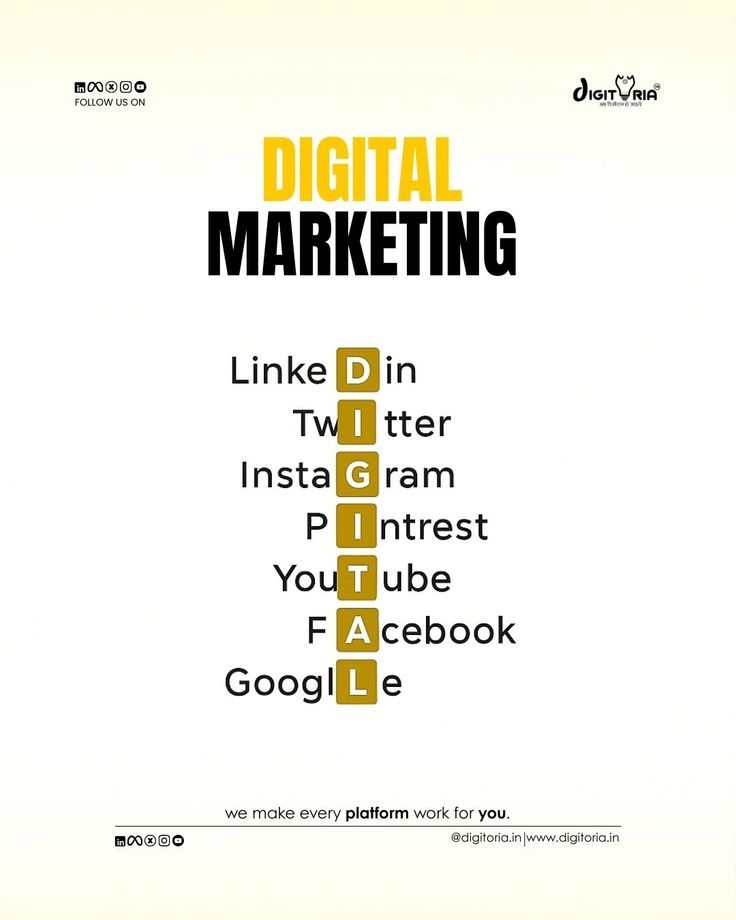You can’t scale growth by pushing harder.
You scale it by building smarter.
(From the top down.)
Most firms want to grow.
But too many teams start too low on the ladder.
They jump straight to habits and behaviours:
“Make more calls!”
“Close more deals!”
“Send more proposals!”
That creates motion, but not momentum.
The best firms flip the pyramid.
They build business development into their culture.
Starting at the top:
1. PURPOSE
↳ This is why your firm exists beyond making money.
↳ When it’s felt, every client moment matters.
2. VISION
↳ Where you’re headed and what you'll be known for.
↳ A clear vision keeps the team focused on the
right growth.
3. STRATEGIC PRIORITIES
↳ These are the things that must be true to reach
your vision.
↳ They show where to go deep and deliver real value.
4. INITIATIVES
↳ These are the visible plays that bring strategy to life.
↳ Think outreach plans, team rhythms, and
consistent action.
5. HABITS & BEHAVIORS
↳ These are what your team does every day.
↳ Culture grows from small, intentional actions.
Here’s why it works:
When your team starts with purpose, they act
with intention.
When they align on vision, they move in the
same direction.
And when they build the right habits, BD becomes
second nature.
The result?
Your team actually enjoys doing it.
Because it doesn’t feel like selling.
It feels like helping.
Which layer is strongest in your firm?
And which one needs a little lift?
You scale it by building smarter.
(From the top down.)
Most firms want to grow.
But too many teams start too low on the ladder.
They jump straight to habits and behaviours:
“Make more calls!”
“Close more deals!”
“Send more proposals!”
That creates motion, but not momentum.
The best firms flip the pyramid.
They build business development into their culture.
Starting at the top:
1. PURPOSE
↳ This is why your firm exists beyond making money.
↳ When it’s felt, every client moment matters.
2. VISION
↳ Where you’re headed and what you'll be known for.
↳ A clear vision keeps the team focused on the
right growth.
3. STRATEGIC PRIORITIES
↳ These are the things that must be true to reach
your vision.
↳ They show where to go deep and deliver real value.
4. INITIATIVES
↳ These are the visible plays that bring strategy to life.
↳ Think outreach plans, team rhythms, and
consistent action.
5. HABITS & BEHAVIORS
↳ These are what your team does every day.
↳ Culture grows from small, intentional actions.
Here’s why it works:
When your team starts with purpose, they act
with intention.
When they align on vision, they move in the
same direction.
And when they build the right habits, BD becomes
second nature.
The result?
Your team actually enjoys doing it.
Because it doesn’t feel like selling.
It feels like helping.
Which layer is strongest in your firm?
And which one needs a little lift?
You can’t scale growth by pushing harder.
You scale it by building smarter.
(From the top down.)
Most firms want to grow.
But too many teams start too low on the ladder.
They jump straight to habits and behaviours:
❌ “Make more calls!”
❌ “Close more deals!”
❌ “Send more proposals!”
That creates motion, but not momentum.
The best firms flip the pyramid.
They build business development into their culture.
Starting at the top:
1. PURPOSE
↳ This is why your firm exists beyond making money.
↳ When it’s felt, every client moment matters.
2. VISION
↳ Where you’re headed and what you'll be known for.
↳ A clear vision keeps the team focused on the
right growth.
3. STRATEGIC PRIORITIES
↳ These are the things that must be true to reach
your vision.
↳ They show where to go deep and deliver real value.
4. INITIATIVES
↳ These are the visible plays that bring strategy to life.
↳ Think outreach plans, team rhythms, and
consistent action.
5. HABITS & BEHAVIORS
↳ These are what your team does every day.
↳ Culture grows from small, intentional actions.
Here’s why it works:
When your team starts with purpose, they act
with intention.
When they align on vision, they move in the
same direction.
And when they build the right habits, BD becomes
second nature.
The result?
Your team actually enjoys doing it.
Because it doesn’t feel like selling.
It feels like helping.
Which layer is strongest in your firm?
And which one needs a little lift?
0 Comments
0 Shares
361 Views
0 Reviews








